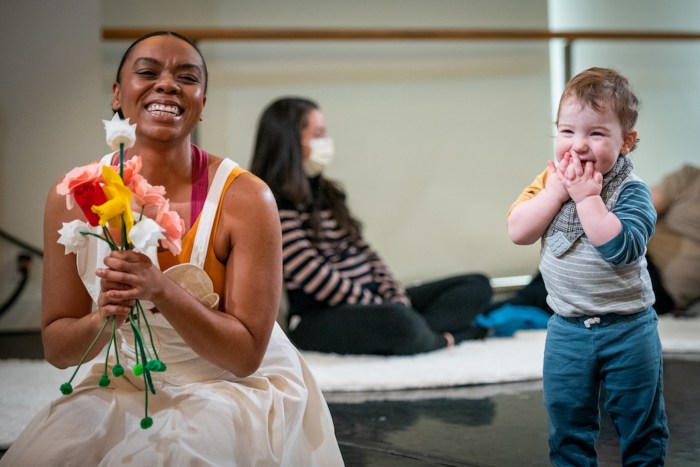By Albert Amateau
Volume 80, Number 45 | April 7 – 13, 2011
West and East Village, Chelsea, Soho, Noho, Little Italy, Chinatown and Lower East Side, Since 1933 The Landmarks Preservation Commission on Tuesday unanimously approved New York University’s proposed changes and restorations of the landscape and lighting of the I.M. Pei-designed Silver Towers landmarked complex on the university’s south superblock. Only six of the commission’s 11 members attended the April 5 hearing but all voted in favor of the N.Y.U. application.
George Miller, managing partner of Pei Cobb Freed and Partners, told the commission that the architectural firm felt the changes retained and improved the essential elements of the landmarked portion of the superblock. Robert Tierney, commission chairperson, said after the vote that the changes would strengthen the landmarked site.
“This is an appropriate restoration and the modifications you’ve suggested are modest,” Tierney told the N.Y.U. presenters.
Nevertheless, three preservation groups and Community Board 2 urged the commission to reject the university’s submission.
The changes, which include installing a dog run in what had been a toddlers’ playground on the West Houston St. side of the landmarked site and building an enlarged playground in the landmarked site north of the proposed dog run, anticipate the eventual approval of the “N.Y.U. 2031” plan for two large buildings on the south superblock but outside the landmarked Pei site. The proposed new dog run would replace an existing dog run on the city-owned strip on the east side of the south superblock, and the new playground would replace a run-down, closed-off one north of the existing dog run on the same strip. The university will seek control of four of the remaining seven strips around the superblocks’ edges as part of the “N.Y.U. 2031” plan.
Much of the opposition to the landscape changes focused on opposition to the university’s long-range plans.
“It should be noted that the reason for the addition of the dog run and the playground to the site — which is premised on N.Y.U.’s seeking to acquire the public land on which a dog run and playground currently sit on Mercer St., in order to build on that site — may hopefully never come to pass, making this application unnecessary,” Elizabeth Finklestein, preservation advocate of the Greenwich Village Society for History Preservation, told the commission on Tuesday. G.V.S.H.P. did not object to the proposal to restore original lighting fixtures, but insisted that the dog run and the playground would be inappropriate. Finklestein said the dog run and playground would detract from the “clear geometric simplicity established in the original design.” The playground and dog run would also be visible behind the 30-foot-tall, Picasso-designed “Sylvette” statue, she added. Community Board 2’s Landmarks Committee also criticized the proposed dog run and playground relocation from the now-city-owned Mercer St. strip.
“Pei did not expect to have a large kids’ playground or dog run disturbing his vision,” said the C.B. 2 testimony, written by Sean Sweeney and delivered by Doris Diether. The C.B. 2 testimony dismissed a letter from the Pei firm in support of the changes. “A mere supporting letter from one of the partners of the firm,” C.B. 2 called it, adding, “It really is irrelevant what Pei himself says now. What matters is keeping true to the design in place at the time of the [landmarks] designation.” The C.B. 2 statement drew applause from the audience at the Tuesday commission hearing. But Miller’s March 10 letter to N.Y.U. said in part, “The larger children’s play area, the introduction of trees along Houston St. and the other design features are positive improvements and my partners and I are pleased to support the proposals.” Also speaking against the changers was the Historic Districts Council. DOCOMOMO, a modern-architecture preservation group, criticized the submission and said N.Y.U. should modify the proposed changes. Along with the unanimous approval, the commission asked N.Y.U. to re-study the northern end of the proposed playground area adjacent to the easternmost Silver Tower to retain some flat lawn “or other soft landscaping element.” Speaking in support of the changes were a representative of the New York Landmarks Conservancy and Tricia Martin, president of the New York Chapter of the Society of Landscape Architects.
Alicia Hurley, N.Y.U. vice president for government and community relations, said she was pleased with the L.P.C. vote.
“The approval is an initial step toward N.Y.U.’s overall proposed plans for the superblocks,” she said, “plans which call for adding some density but also introducing significant new landscape and public open-space amenities for residents of the blocks, as well as the neighborhood.”N.Y.U. gets O.K. for Silver Towers modification plan




































